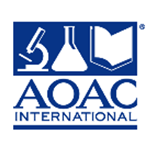According to regulation 183/2005 and the K.Y.A 340668/2008, among the commitments of feed production facilities are the annual plan for sampling and analysing products and the annual control of their homogenizers to ensure the homogeneity of the products.
The homogeneity testing is done by using an appropriate tracer at the stage of production. Then follows the chemical identification of the tracer in a specific number of samples from the final mix and the statistical process of the results.
The most common substances used for this purpose are inorganic salts of sodium, potassium or cobalt, amino acids and other micronutrients. Each tracer has advantages and disadvantages depending on the working methods and the type of the feed.

Proteins or phosphorus cannot be used as tracers because many different components of the recipe have even a small percentage of proteins or phosphorus which is summed and in this way the result may be confusing.
The test must be carried out with a specific protocol and apart from the homogeneity it also controls the cross-contamination between the different production batches.
In Tsakalidis Analysis & Testing we can assist you choose the appropriate tracer and design your sampling plan . After the test we will deliver a comprehensive certificate for compliance or failure of your production process. This will help you, if necessary, to adjust the production line parameters (mixing time etc.) for the optimal performance of your unit.






